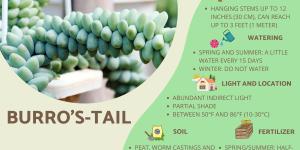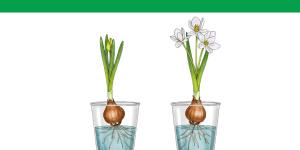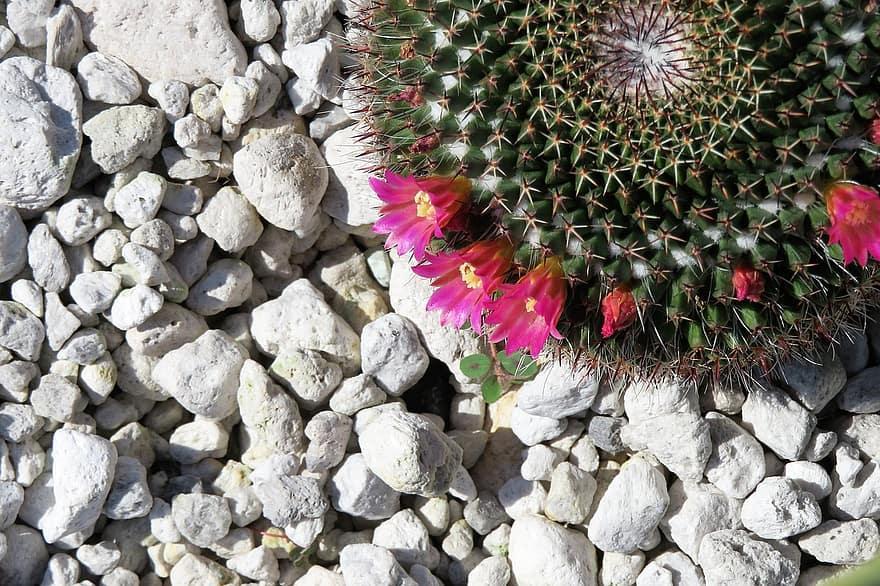How to Use Pumice in Plants


Think pumice is just a volcanic rock? Think again! This lightweight, porous material offers surprising benefits for your garden, especially for succulents. Not only does it promote healthy plant growth, but it's also budget-friendly, making it a valuable tool for gardeners of all levels. Formed during volcanic eruptions, pumice traps air bubbles, resulting in its unique, sponge-like structure. This structure translates into several practical advantages, particularly for succulents.
In the following article by thedailyECO, we will discuss how to use pumice stones in the garden as well as its many benefits in terms of plant care.
What is pumice for plants?
Pumice is a naturally occurring volcanic rock with unique properties that make it a valuable soil amendment for various gardening and horticultural applications. Formed during volcanic eruptions, pumice traps air bubbles as it cools, resulting in its characteristically light and airy structure.
It is prized for its porous and lightweight nature, which helps improve soil aeration, drainage, and water retention. Pumice is often used in potting mixes for container plants, as well as in garden beds and landscaping projects. It is especially beneficial for plants that require well-draining soil, such as succulents, cacti, and other drought-tolerant species. Additionally, pumice does not decompose over time, making it a long-lasting soil amendment that can improve soil structure and fertility for years to come.

Benefits of pumice for plants
Pumice offers several properties that make it a valuable soil amendment for various gardening and horticultural applications. Its unique characteristics contribute to improved plant growth in multiple ways:
- Due to its high porosity, pumice effectively absorbs and drains excess water, preventing waterlogging and subsequent root rot. This benefit is particularly significant for plants susceptible to moisture sensitivity.
- The porous structure of pumice facilitates air circulation around plant roots, promoting root respiration and overall plant health. This contributes to efficient nutrient uptake and root development.
- The addition of pumice to soil helps prevent compaction, maintaining a loose and friable structure. This allows for easier root penetration and prevents the formation of dense layers that can hinder root growth.
- While promoting drainage, pumice also retains some moisture within its pores, acting as a reservoir for plant roots during dry periods. This helps regulate soil moisture levels and reduces the frequency of watering needs.
- Pumice possesses a neutral pH, meaning it does not alter the existing pH of the soil. This makes it suitable for use with a wide range of plants without impacting their nutrient uptake or causing pH imbalances.
Finally, unlike organic matter, pumice is a durable material that resists decomposition over time. This allows it to provide long-lasting benefits to soil structure and plant growth, requiring less frequent reapplication compared to other amendments.
You might be interested in this other article, where we discuss what is akadama soil for bonsai.

How do you use pumice stones for plants?
Pumice stones can be used in various ways to benefit plants and improve soil conditions. Here are some common methods for using pumice stones in gardening:
In potting mixes:
- Mix ratios: start with a base of your preferred potting mix and add pumice at a ratio of 1:1 to 1:3, depending on desired drainage and plant needs. Succulents and cacti typically require more pumice (2:1 or 3:1).
- Size: use finer pumice (pea gravel size) for better blending and even moisture distribution.
- Benefits: improves drainage, aeration, and prevents soil compaction.
In garden beds:
- Mixing: amend existing soil by incorporating pumice throughout the top 15-20 cm (6-8 inches). Aim for a 1:3 to 1:5 ratio with soil.
- Drainage layers: create a 5-7 cm (2-3 inch) layer of pumice at the bottom of raised beds or in areas prone to waterlogging.
- Benefits: enhances drainage, particularly valuable for heavy clay soils or areas with high rainfall.
Other applications:
- Hydroponics: use pumice as a growing medium for hydroponic systems due to its excellent drainage and water retention properties.
- Mulching: spread a thin layer of pumice around the base of plants to suppress weeds and conserve moisture.
- Seed starting: mix pumice with your seed starting mix for better aeration and drainage, promoting healthy seedling development.
Is pumice good for indoor plants?
Pumice can be a valuable tool for indoor plants, boosting drainage and aeration for those that thrive in drier conditions like succulents and cacti. However, consider your plant's needs and mix pumice with other components like soil and compost for a balanced blend. While it helps prevent root rot from overwatering, some moisture-loving plants might need alternatives like coconut coir.
Is pumice the same as perlite?
Pumice and perlite, both originating from volcanic activity, are commonly utilized as soil amendments in gardening. Despite their shared lightweight and porous nature, crucial differences exist between these materials, impacting their suitability for various plant needs.
Firstly, considering their formation, pumice emerges from highly porous lava, trapping gases during the cooling process and resulting in a reddish-brown, lightweight structure. Conversely, perlite forms from volcanic glass that expands when heated, leading to small, white, lightweight granules.
These distinct origins translate into differences in texture and density. Pumice boasts a rough, irregular texture with larger pores, making it denser and heavier than perlite. Perlite, in contrast, possesses a smoother texture with smaller pores, granting it a lighter and more buoyant nature.
These characteristics significantly influence their water retention capabilities. Pumice, with its larger pores, retains moderate moisture content, catering to plants requiring balanced drainage and hydration. Perlite, owing to its smaller pores, offers excellent drainage but limited water retention, making it ideal for plants accustomed to drier conditions.
Importantly, both pumice and perlite remain pH neutral, meaning they do not alter the existing pH of the soil, ensuring compatibility with a wide range of plants.
In terms of applications, both materials improve soil aeration and drainage, benefiting various gardening scenarios. However, specific plant needs dictate the appropriate choice. Pumice, on the othe hand, due to its moderate moisture retention, finds favor for plants requiring balanced drainage and hydration, such as certain vegetables. Perlite, excelling in drainage, often features in potting mixes for plants accustomed to drier environments, like cacti and succulents.
Before you go, make sure to rad this other article in which you'll learn about vermiculite and perlite, understand their key differences, and pick the perfect fit for your plant pals.
If you want to read similar articles to How to Use Pumice in Plants, we recommend you visit our Plant care and cultivation category.







